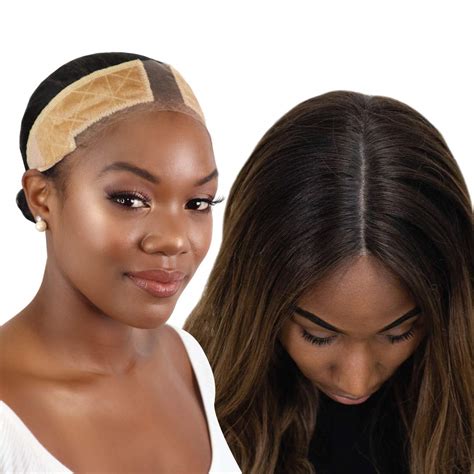Introduction
A wig grip band is an essential accessory for wig wearers. It provides a secure and comfortable fit, preventing the wig from slipping or moving out of place. This guide explores the benefits, types, and proper use of wig grip bands, empowering you to achieve the perfect wig fit without discomfort or insecurity.

Benefits of Wig Grip Bands
- Secure Fit: Wig grip bands create a snug fit around the head, keeping the wig in place even during vigorous activities or windy conditions.
- Reduced Irritation: They minimize friction between the wig and the scalp, reducing irritation and discomfort.
- Sweat Absorption: Many wig grip bands are made from materials that absorb sweat, keeping the head cool and dry.
- Style Customization: Wig grip bands come in various widths and styles, allowing for customization to suit different wig sizes and preferences.
- Affordable Solution: Compared to other wig accessories, wig grip bands are incredibly affordable, making them accessible for all.
Types of Wig Grip Bands
1. Silicone Wig Grip Bands
- Thin and flexible bands made of silicone
- Comfortably conforms to the shape of the head
- Offers great adhesion and prevents slipping
2. Velvet Wig Grip Bands
- Wider bands made of soft velvet
- Provides a snug fit while being gentle on the skin
- Ideal for sensitive scalps or extended wear
3. Cotton Wig Grip Bands
- Breathable and absorbent cotton bands
- Perfect for warm climates or those prone to sweating
- May require additional adjustments for a secure fit
4. Lace Wig Grip Bands
- Specifically designed for lace wigs
- Invisible under the wig, ensuring a natural appearance
- Creates a tight grip without damaging the lace
Proper Use of Wig Grip Bands
- Place the Band: Position the wig grip band around the desired area on your head, usually at the hairline or slightly behind it.
- Stretch and Secure: Gently stretch the band and secure it firmly but not too tightly.
- Adjust and Wear: Check the fit and adjust as needed to ensure a comfortable and secure hold.
- Remove: Carefully remove the wig grip band when not in use.
Choosing the Right Wig Grip Band
Consider the following factors when selecting a wig grip band:
- Head Size: Measure your head circumference to determine the appropriate width of the band.
- Hairline: Choose a band that aligns with your natural hairline or just above it.
- Wig Type: Different wig types (lace wigs, synthetic wigs, etc.) may require specific grip bands.
- Comfort Level: Opt for a band that feels comfortable and doesn’t irritate your skin.
- Style and Appearance: Consider the style and visibility of the grip band based on your personal preferences.
Customer Requirements and Concerns
Want: A wig grip band that provides a secure fit without causing discomfort.
Need: A band that is easy to use, affordable, and suitable for different wig types and scalp sensitivities.
Concern:
– Slipping or Movement: Improperly fitted or low-quality grip bands can result in wig slippage or movement.
– Irritation: Wearing a grip band that is too tight or made from rough materials can irritate the scalp.
Pros and Cons of Different Grip Band Types
| Grip Band Type | Pros | Cons |
|---|---|---|
| Silicone | Secure fit, waterproof, easy to clean | Can be uncomfortable for extended wear |
| Velvet | Soft and gentle on the skin, breathable | May not provide as secure a fit as silicone |
| Cotton | Absorbent, affordable | Requires frequent adjustments, may not be as durable |
| Lace | Invisible, natural-looking | More expensive, requires special care |
Frequently Asked Questions (FAQs)
-
How often should I replace my wig grip band?
– Replace every 3-6 months or as needed when it loses its grip or elasticity. -
Can I wash my wig grip band?
– Yes, most wig grip bands can be hand-washed with mild detergent and air-dried. -
What if the wig grip band is too loose?
– Adjust the band accordingly or try a smaller size. Consider using hair clips or bobby pins for additional security. -
What if the wig grip band is too tight?
– Stretch the band gently or try a larger size. Avoid wearing a grip band that is too tight to prevent irritation or discomfort. -
Can I wear a wig grip band under a headband?
– Yes, wearing a headband over a wig grip band can provide additional security and style. -
Can I wear a wig grip band with a hairpiece?
– Yes, a wig grip band can be used to secure hairpieces, such as clip-ins or ponytails. -
Are there different wig grip band sizes?
– Yes, wig grip bands come in various sizes to accommodate different head circumferences. -
Can I use a wig grip band without glue?
– Yes, wig grip bands can provide a secure fit without the use of adhesive. However, the level of security may vary depending on the grip band type and individual scalp characteristics.
Future Applications for Wig Grip Bands
The concept of wig grip bands can be extended to other applications that require a secure and comfortable fit. Consider the following innovative ideas:
- Headband Grip Bands: Grip bands designed to keep headbands in place during physical activities or windy conditions.
- Helmet Grip Bands: Bands placed inside helmets to prevent movement and improve comfort during sports or outdoor activities.
- Glasses Grip Bands: Bands that wrap around the earpieces of eyeglasses to enhance stability and prevent slippage.
